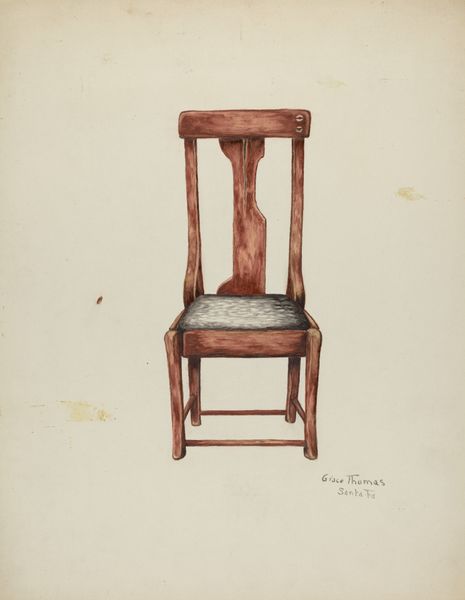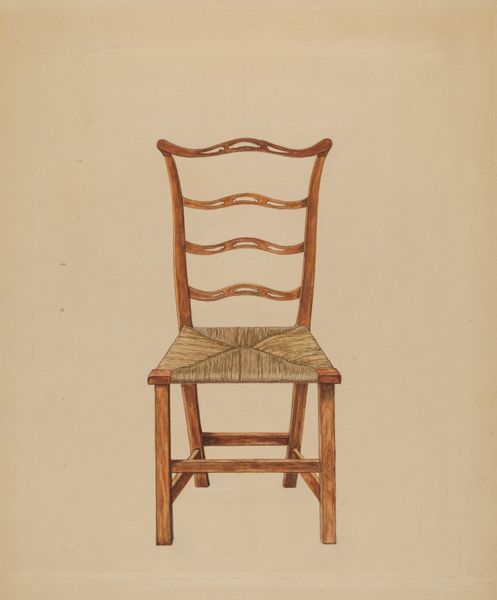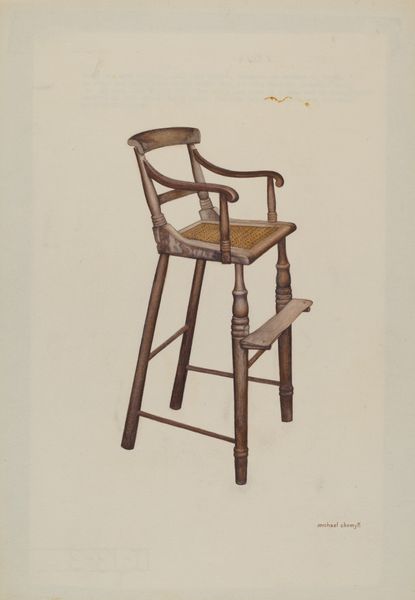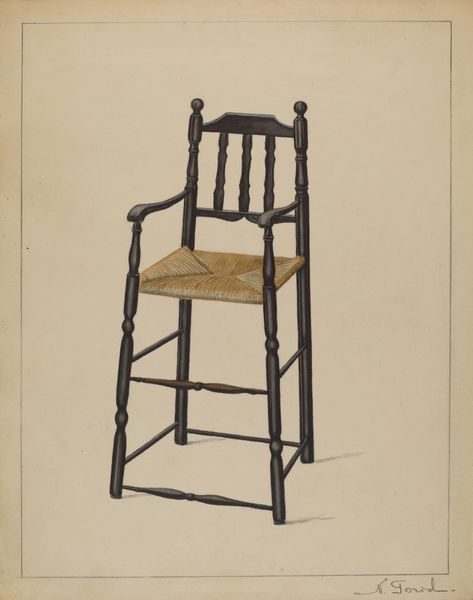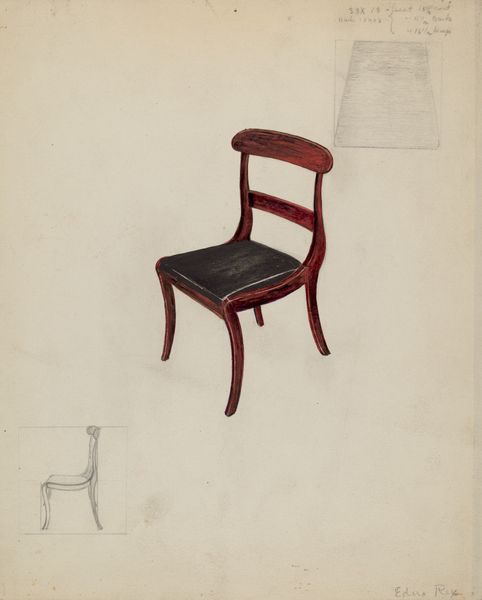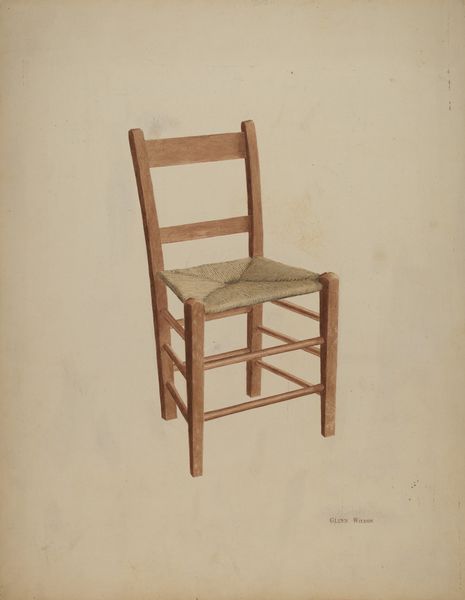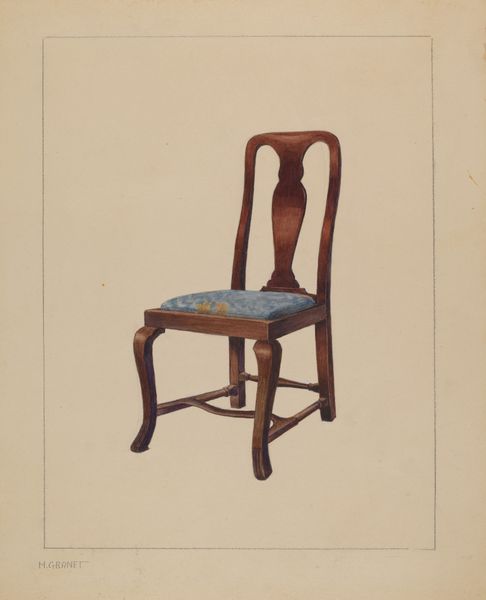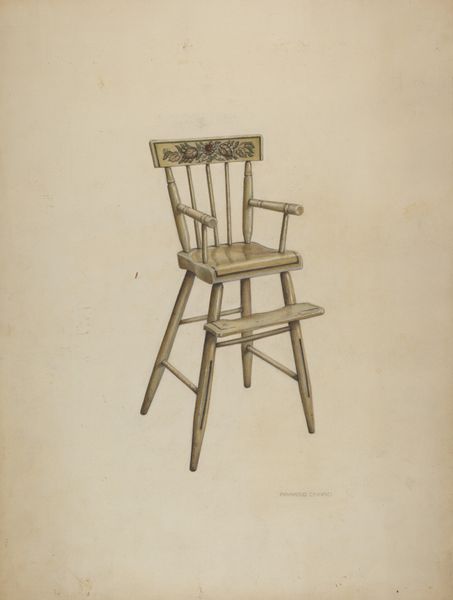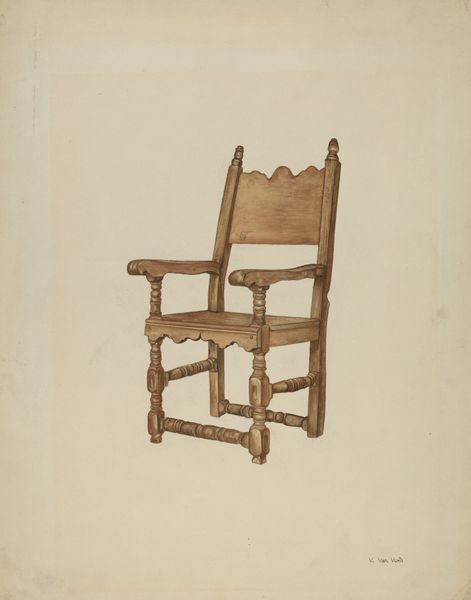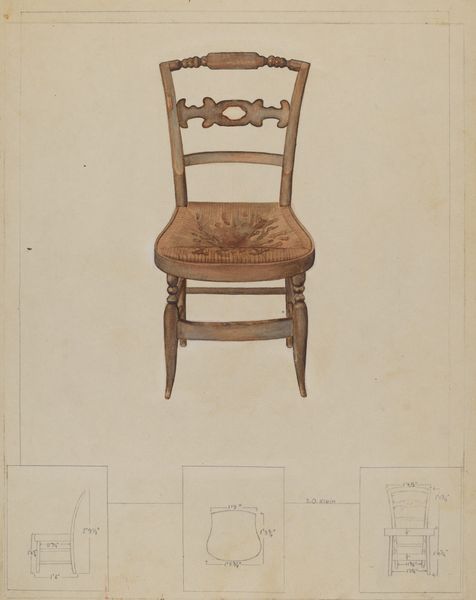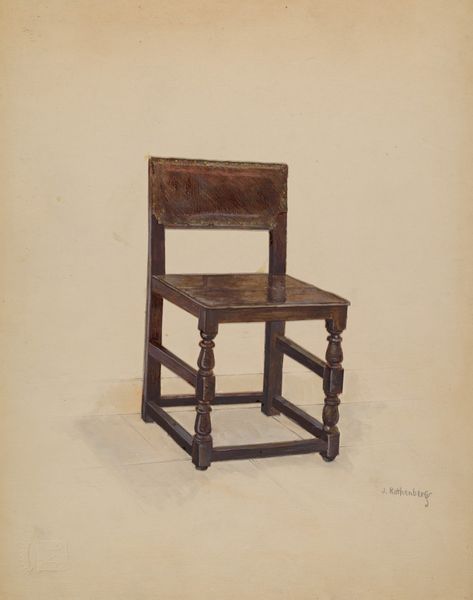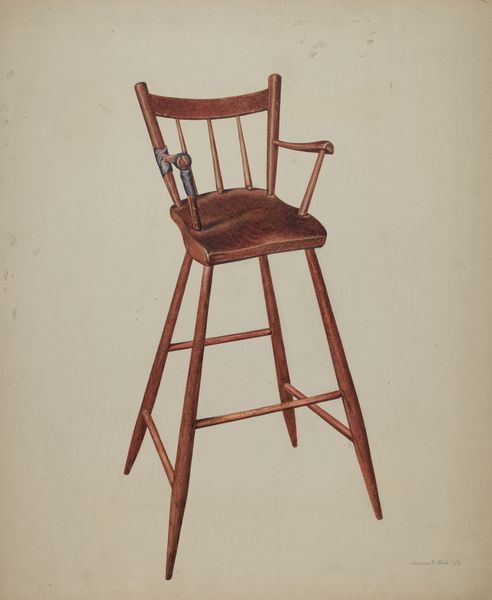
drawing, paper, pencil
#
drawing
#
figuration
#
paper
#
pencil
#
academic-art
#
realism
Dimensions: overall: 33 x 25.4 cm (13 x 10 in.) Original IAD Object: 35"high overall; seat 17"high; 14" deep (seat). Dims. from scale dwg.
Copyright: National Gallery of Art: CC0 1.0
Editor: So, here we have Wellington Blewett's "Chair," created around 1941. It’s a pencil and paper drawing, rendered with some realism. It’s an interesting combination of a straightforward depiction with technical drawings included. What’s your take on it? Curator: At first glance, it’s tempting to simply appreciate the drafting skill, the clean lines, and attention to detail. But let’s consider what a chair represents, particularly in 1941. Are you thinking about what kind of labour, domesticity, and gender roles may be related to the depicted object? Editor: That’s a cool way to put it! So the chair becomes more than just an object; it becomes a symbol of all these ideas related to labour or comfort and domesticity. The era would play a major role then in understanding its role and intention? Curator: Precisely. During this period, especially with the war effort, consider who might have been sitting in this chair, or crafting it. How did gender and social class influence experiences and expectations? Editor: Now that you mention it, the chair looks almost…unoccupied, like a space waiting to be filled. Were there major tensions around home during that period that an artist may choose to capture? Curator: The war was definitely impacting society, especially regarding race and social inequality. Artists, through these domestic representations, frequently brought such political concerns to the fore. But perhaps this one chose instead a silent commentary. Who is this for, this particular design? What space do you think it hopes to fill, physically or even culturally? Editor: I never would have considered all those things from just looking at a chair! Curator: That's the beauty of art history; it is more than just a nice chair; we unpack embedded cultural ideologies, in what is included and how it is represented. Editor: Absolutely. Looking at it now, I appreciate it more, not just as a drawing, but as a conversation piece on design, intention, and wartime representation.
Comments
No comments
Be the first to comment and join the conversation on the ultimate creative platform.
